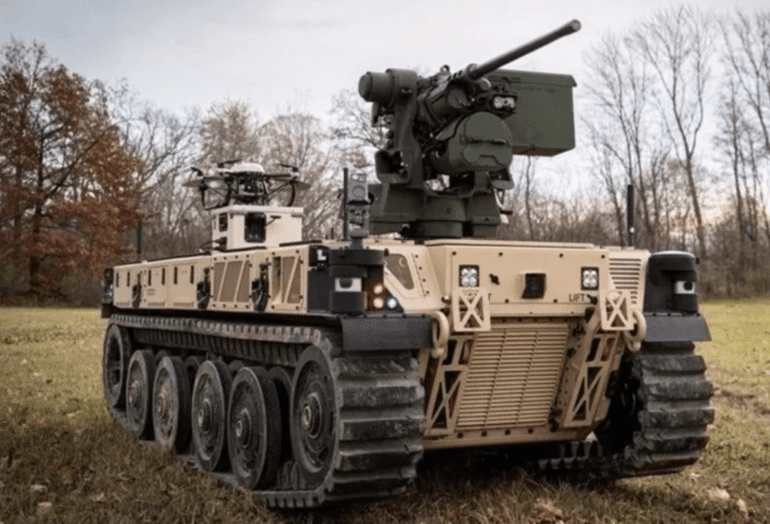TL;DR:
- Leidos and Domino Data Lab conducted a digital wargame simulating maritime combat.
- Over 60 AI researchers used Reinforcement Learning (RL) to achieve remarkable success.
- RL mimics human learning, allowing machines to adapt through trial and error.
- RL utilizes rewards and punishments to maximize favorable outcomes.
- RL draws inspiration from human psychology and behavior models.
- Machines learning from their environment offer advantages in dynamic warfare.
- Automation of military operations, including managing complex systems like drone swarms, is becoming essential.
- RL’s application extends beyond the battlefield to enhance various systems.
- Ethical and governance concerns arise with the deployment of self-learning machines in the military.
- RL has the potential to revolutionize commerce and culture.
Main AI News:
In a recent groundbreaking development, Leidos, a federal contractor, partnered with Domino Data Lab, a machine-learning company, to conduct a digital wargame that illuminated the potential of AI in automating military operations. This cutting-edge exercise simulated a maritime combat scenario, where the objective was to neutralize threats to a naval fleet while safeguarding nearby commercial vessels.
Over 60 artificial-intelligence researchers from Leidos participated in this endeavor, and the winning team achieved a flawless score. Their success can be attributed to a revolutionary approach known as Reinforcement Learning (RL), a concept that mirrors how humans learn. RL involves crafting algorithms that enable machines to learn from their environments through trial and error, similar to the learning process in young children.
The essence of RL lies in guiding machines to attain desired outcomes while continually adapting to their surroundings. This results in machines making increasingly nuanced and precise decisions over time. In a virtual roundtable discussion, Kevin Albarado, an AI and autonomy branch chief at Leidos subsidiary Dynetics, and Thomas Robinson, chief operating officer of Domino Data Lab, shared insights into how RL can efficiently achieve desired outcomes in unstructured scenarios, outperforming other machine learning approaches.
In traditional machine learning, agents are typically programmed to respond in specific circumstances. However, RL takes a different approach. As Richard Sutton and Andrew Barto highlight in their book, “Reinforcement Learning: An Introduction,” obtaining examples of desired behavior representative of all possible situations is often impractical in interactive problems. RL empowers machines to learn from their interactions with the environment.
Albarado and Robinson liken the RL process to a system of rewards and punishments, wherein software is designed to help machines maximize favorable outcomes. This software not only increases the likelihood of desired decisions in the short term but also structures the learning process for long-term rewards. The machine accumulates knowledge through experience, honing its performance over time.
Remarkably, RL draws inspiration from fields such as human psychology, neuroscience, and economics, mirroring human behavior models. This conceptual similarity to stimulus-response mechanisms, reminiscent of BF. Skinner’s operant conditioning theory allows machines to adapt and “think” in novel situations.
In an era of dynamic warfare among advanced military powers, pre-programming computers for all wartime contingencies is virtually impossible. Machines that learn from their environments may not always provide the perfect response, but they can become faster and more efficient than humans, offering a crucial advantage in evolving conflicts.
As warfare accelerates, continuous human intervention in tactical decisions could lead to defeat. Automation of certain military operations is becoming essential for victory, especially in managing complex systems like drone swarms, which human capacity alone may struggle to handle within tight combat timelines.
Reinforcement Learning’s application extends beyond the battlefield. It can enhance various subsystems in advanced combat systems and be employed in everyday scenarios, as demonstrated by self-learning thermostats. The integration of RL into combat operations may be just a couple of years away, prompting concerns about governance and ethical considerations when deploying self-learning machines in the military.
The advent of Reinforcement Learning introduces a new dimension to these challenges, demanding careful thought and ethical oversight. Nevertheless, RL’s potential benefits in revolutionizing commerce and culture are too substantial to overlook.
Conclusion:
Reinforcement Learning’s emergence in military operations signifies a transformative shift. Its potential to automate complex tasks and adapt to dynamic situations holds promise not only for defense but also for various industries seeking efficiency and innovation in the digital era. Businesses should explore RL’s applications to stay competitive and agile in an ever-evolving market landscape.

